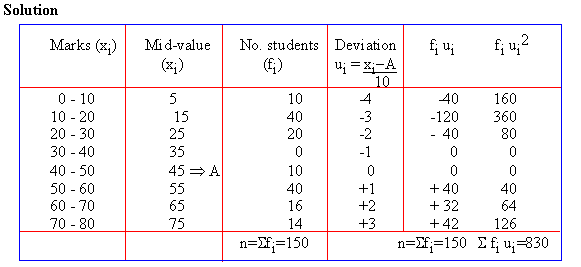|
Tests Of Skewness
1. The values of mean, median and mode do not coincide. The more the difference between them, the more is the skewness.
2. Quartiles are not equidistant from the median.
i.e. ( Q3 -Me ) Ļ ( Me - Q1
).
3 The sum of positive deviations from the median is not equal to the sum of the negative deviations.
4. Frequencies are not equally distributed at points of equal deviation from the mode.
5. When the data is plotted on a graph they do not give the normal bell-shaped form.
Measure Of Skewness
1. First measure of skewness It is given by Karl Pearson
Measure of skewness Co-efficient of skewness
Skp = Mean - Mode J = 
i.e. Skp = - Mo
- Mo
Pearson has suggested the use of this formula if it is not possible to determine the mode (Mo) of any distribution,
( Mean - Mode ) = 3 ( mean - median )
Skp = 3 (  -
Mo ) Thus J = -
Mo ) Thus J = 
Note : i) Although the co-efficient of skewness
is always within Ī 1, but Karl Pearsonís
co-efficient lies within ± 3.
ii) If J = 0, then there is no skewness
iii) If J is positive, the skewness is also positive.
iv) If J is negative, the skewness is also negative.
Unless and until no indication is given, you must use only Karl Pearsonís formula.
Example Find Karl Pearsonís coefficient of skewness from the following data:
|
Marks above : |
No.of students: |
|
0 |
150 |
|
10 |
140 |
|
20 |
100 |
|
30 |
80 |
|
40 |
80 |
|
50 |
70 |
|
60 |
30 |
|
70 |
14 |
|
80 |
0 |

Click here to enlarge
[next page]
|